您当前的位置:检测资讯 > 法规标准
嘉峪检测网 2022-09-12 22:38
Action limit —— An established relevant measure (e.g. microbial, or airborne particle limits) that, when exceeded, should trigger appropriate investigation and corrective action based on the investigation.
行动限(Action limit)——所建立的相关指标(例如,微生物限度或悬浮粒子限度),当超过此限度时,应触发适当的调查和基于此调查的纠正措施。
Alert level —— An established relevant measure (e.g. microbial, or airborne particle levels) giving early warning of potential drift from normal operating conditions and validated state, which does not necessarily give grounds for corrective action but triggers appropriate scrutiny and follow——up to address the potential problem. Alert levels are established based on routine and qualification trend data and are periodically reviewed. The alert level can be based on a number of parameters including adverse trends, individual excursions above a set limit and repeat events.
警戒限(Alert Level)——所建立的相关指标(例如,微生物或悬浮粒子水平),它给出可能偏离正常运行条件和已验证状态的早期预警,不一定需要纠正措施,但会触发适当审查和跟进以解决潜在问题。警戒限可基于日常和确认的趋势分析数据建立,并定期回顾。警戒限可以基于多个参数,包括不良趋势、单个超出所设限度和重复事件。
——最新定义来自EU GMP 附录1 无菌药品生产-2022
EU GMP 附录1 无菌药品生产 中的相关规定:
6.13 Regular ongoing chemical and microbial monitoring of water systems should be performed to ensure that the water continues to meet compendial expectations. Alert levels should be based on the initial qualification data and thereafter periodically reassessed on data obtained during subsequent re-qualifications, routine monitoring, and investigations. Review of ongoing monitoring data should be carried out to identify any adverse trend in system performance.
应定期对水系统进行化学和微生物监测,以确保水持续符合药典标准。警戒限应基于初始确认数据,然后根据在后续再确认、日常监测和调查期间获得的数据定期重新评估。应审查持续监测数据以发现系统性能的任何不良趋势。
9.9 Appropriate alert levels and action limits should be set for the results of viable and total particle monitoring. The maximum total particle action limits are described in Table 5 and the maximum viable particle action limits are described in Table 6. However, more stringent action limits may be applied based on data trending, the nature of the process or as determined within the CCS. Both viable and total particle alert levels should be established based on results of cleanroom qualification tests and periodically reviewed based on ongoing trend data.
应为活性和总粒子监测的结果设置适当的警戒限和行动限。总粒子最大行动限作在表5中描述,活性粒子最大行动限在表6中描述。但是,可以根据数据趋势、工艺性质或CCS中的决定,应用更严格的行动限。应根据洁净室确认测试的结果建立活性和总粒子警戒限,并根据持续的趋势数据定期回顾。
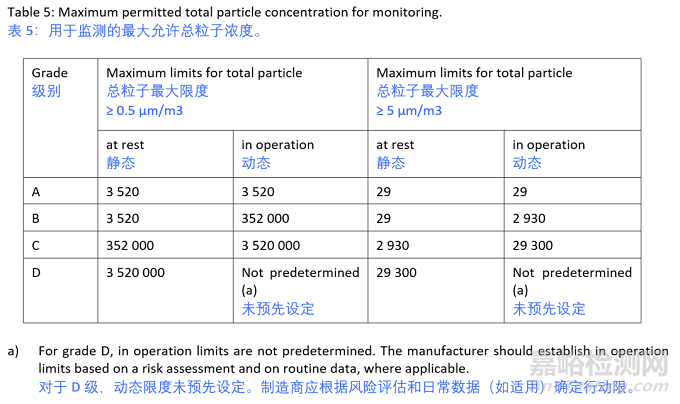
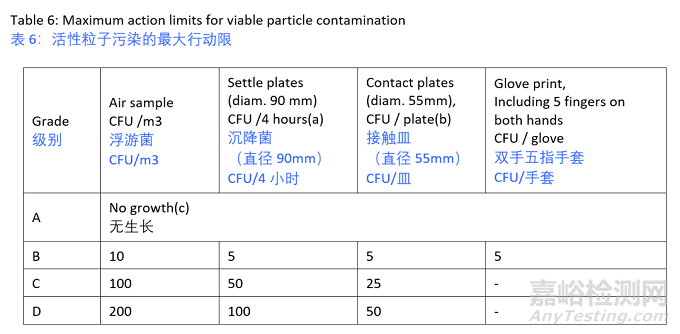
9.10 Alert levels for grade A (total particle only) grade B, grade C and grade D should be set such that adverse trends (e.g. a numbers of events or individual events that indicate a deterioration of environmental control) are detected and addressed.
应设置A级(仅总粒子)、B级、C级和D级的警戒限,以便检测和解决不良趋势(例如,表明环境控制恶化的一些事件或单个事件)。
9.12 The monitoring of grade C and D cleanrooms in operation should be performed based on data collected during qualification and routine data to allow effective trend analysis. The requirements of alert levels and action limits will depend on the nature of the operations carried out. Action limits may be more stringent than those listed in Table 5 and Table 6.
C级和D级洁净室的动态监测应基于在确认期间收集的数据和日常数据进行,以便进行有效的趋势分析。警戒限和行动限的要求将取决于所执行操作的性质。行动限可能比表 5 和表 6 中列出的限度更严格。
如何建立警戒限/行动限?
关于警戒限/行动限的建立,有些公司仍使用标准上限的80%、60%方法,且沿用近十年未改变。
ISO14644-2:2015 要求根据历史数据制定合适的警戒限/行动限。
EU GMP无菌附录1-2022 甚至要求根据日常数据制定D级区的动态标准和行动限。
2020版《中国药典》通则9025《药品洁净实验室微生物监测和控制指导原则》要求药品洁净实验室应根据历史数据,结合不同洁净区域的标准,采用适宜的方法,制定适当的微生物监测警戒限和纠偏限。限度确定后,应定期回顾评价,如历史数据表明环境有所改善,限度应作出相应调整以反映环境实际质量状况。并给出A、B、C、D级微生物监测的警戒限、行动限参考值:
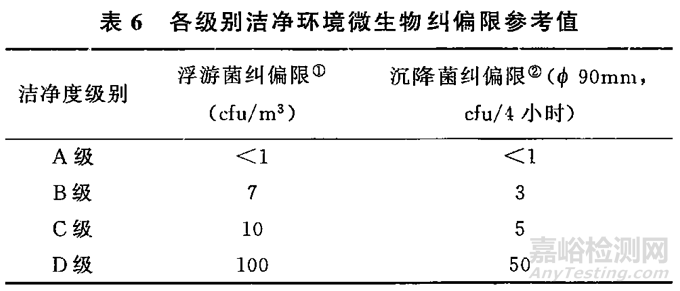
由于需要判断系统正常运行范围,本文给出制定警戒限/行动限常见的三种方法,供大家参考:
正态分布法:这种方法适用于正态性数据,平均值+2 倍的标准差作为警戒限,平均值+3倍标准差作为行动限。
百分位数法:对监测结果排序,取95%分位数作为警戒限,99%分位数作为行动限。
非参数容许区间法:微生物数据尤为合适,警戒限y = 0.95, P= 0.95;行动限y = 0.95, P= 0.99。
案例:
现有某纯化水系统回水点过去一年微生物状态监测结果,试制定基于统计学的警戒限/行动限。
适用非参数容许区间法,使用Minitab进行计算,选择统计 > 质量工具 > 公差区间(非正态分布)
从下拉列表中,选择样本。
单击选项。
从公差区间中,选择上限/下限。
分别设定置信水平=95.0,区间中总体百分比=95.0(警戒限)或99.0(行动限)
在每个对话框中单击确定。
操作方法:
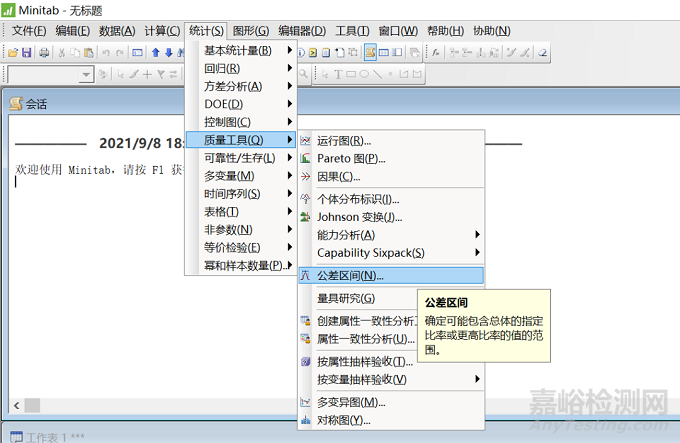
参数设置:
警戒限:p=95.0;行动限:p=99.0
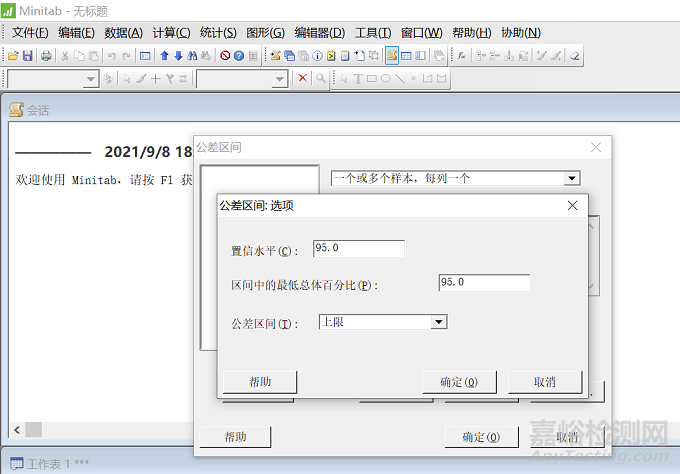
输出结果:警戒限
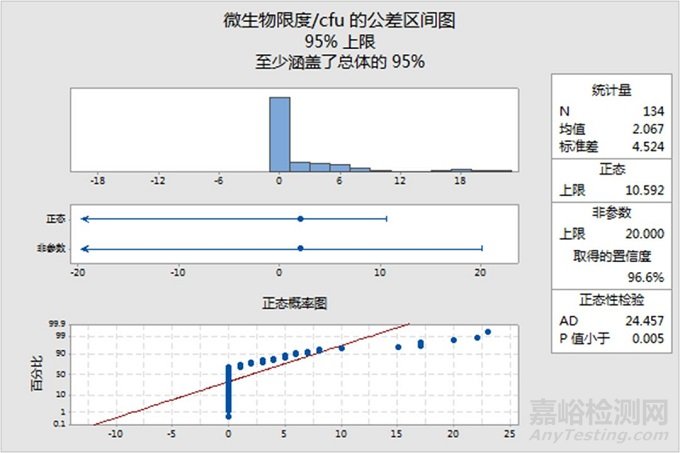
输出结果:行动限
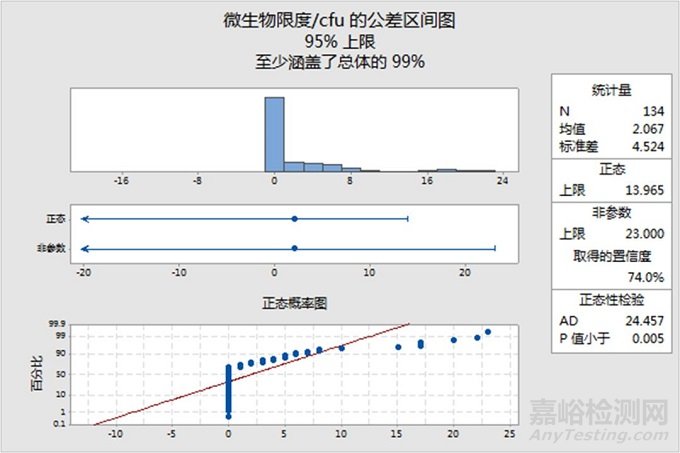
案例中得出该纯化水系统回水点微生物水平警戒限=20cfu,行动限=23cfu
限度设定后,应定期回顾评价,如每年。如果历史性数据表明环境有所改善,则限度也应作出相应调整以反映出实际的环境状况。
ISO 14644-2:2015要求对于不同的监测位置,可能需要不同的警戒限/行动限。
另外,监测位置发生变化时,警戒限/行动限也需要作相应的变化。
关于警戒限,还应考虑基于其他参数,例如,监测数据连续上升(不良趋势)、重复事件等。
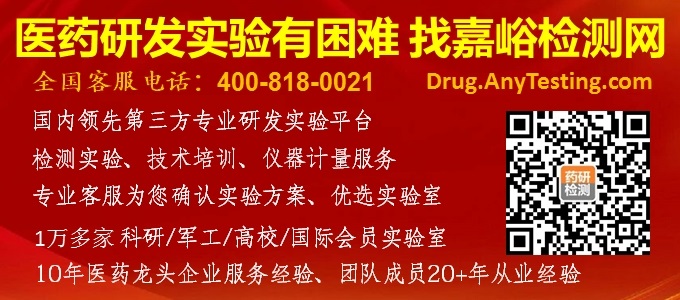
来源:GMP办公室


